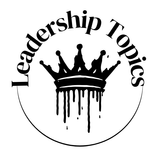The CFO’s Role in Navigating Economic Uncertainty: Strategies for Maintaining Financial Stability
Learn how CFOs can maintain financial stability during times of economic uncertainty. Discover strategies for cash flow management, scenario planning, cost optimization, and risk mitigation.

In today’s volatile global economy, economic uncertainty has become a constant challenge for businesses across all industries. From geopolitical tensions and trade disputes to inflationary pressures and supply chain disruptions, CFOs are increasingly tasked with steering their organizations through unpredictable times. In these periods of uncertainty, the CFO’s ability to maintain financial stability, protect cash flow, and guide the company through turbulent markets is more critical than ever.
This article explores key strategies CFOs can employ to navigate economic uncertainty and ensure the long-term financial health of their organizations.
Understanding the Sources of Economic Uncertainty
Economic uncertainty can arise from a variety of factors, both internal and external. CFOs must be adept at identifying and understanding the potential impacts of these factors on their organization’s financial performance. Some of the most common sources of economic uncertainty include:
- Macroeconomic Fluctuations: Global economic shifts, such as inflation, interest rate hikes, and currency fluctuations, can have significant effects on a company’s cost structure, profitability, and overall financial stability.
- Political Instability and Geopolitical Risks: Changes in government policies, regulations, or international trade agreements can introduce uncertainty into markets and affect the operating environment for businesses.
- Supply Chain Disruptions: External shocks, such as the COVID-19 pandemic, have highlighted the vulnerability of global supply chains. Delays, shortages, and increased costs can significantly impact cash flow and profitability.
- Technological Disruption: The rapid pace of technological change can create challenges for businesses that struggle to keep up with innovation, while also presenting opportunities for companies that can quickly adapt.
By understanding the root causes of economic uncertainty, CFOs can better assess the risks to their business and develop more effective strategies for navigating these challenges.
Building a Resilient Cash Flow Strategy
One of the primary responsibilities of a CFO during times of economic uncertainty is to protect and preserve the company’s cash flow. Cash flow management becomes even more critical when external factors put pressure on revenues or increase operating costs. Ensuring liquidity and maintaining access to capital are essential to keeping the business afloat during periods of market instability.
CFOs should focus on optimizing working capital by reducing unnecessary expenses, accelerating accounts receivable collections, and renegotiating payment terms with suppliers. In addition, building a robust cash reserve or securing lines of credit can provide the financial cushion necessary to weather temporary downturns.
Maintaining liquidity also enables the company to take advantage of opportunities that may arise during challenging economic periods, such as strategic acquisitions or investments in growth areas.
Scenario Planning and Stress Testing
Scenario planning is a critical tool for CFOs navigating uncertain economic conditions. By creating multiple financial scenarios that account for different potential outcomes—such as a recession, interest rate hikes, or supply chain disruptions—CFOs can better understand how these events would impact the company’s financial health. This proactive approach allows CFOs to develop contingency plans and adjust the company’s strategy accordingly.
Stress testing, a related practice, involves evaluating the company’s financial resilience by simulating the effects of extreme but plausible adverse events. For example, CFOs can stress-test their balance sheets by examining how a 10% decline in revenues or a 5% increase in costs would affect profitability, liquidity, and debt levels. These exercises help CFOs identify potential weaknesses and develop mitigation strategies before a crisis occurs.
Strengthening Cost Management and Operational Efficiency
In times of economic uncertainty, cost management becomes a top priority. CFOs must ensure that their organizations are operating as efficiently as possible, identifying areas where costs can be reduced without compromising the company’s ability to compete or deliver value to customers. This often involves streamlining operations, optimizing supply chains, and renegotiating contracts to secure more favorable terms.
However, cost-cutting should be approached strategically. CFOs must balance the need to reduce expenses with the imperative to invest in areas that drive growth and innovation. Eliminating too many resources or reducing headcount can damage the company’s long-term prospects, especially if economic conditions improve more quickly than anticipated.
Improving operational efficiency also involves leveraging technology to automate manual processes, reduce redundancies, and improve decision-making with real-time data. By investing in digital tools and technologies, CFOs can help their organizations become more agile and better prepared to navigate an uncertain economic landscape.
Hedging Against Risks
In volatile economic environments, CFOs should explore financial hedging strategies to mitigate the risks associated with currency fluctuations, interest rate volatility, and commodity price swings. Hedging allows businesses to lock in favorable rates or prices, providing a level of certainty in otherwise unpredictable markets.
For example, companies with significant international exposure can use currency hedging instruments such as forward contracts or options to reduce the impact of unfavorable exchange rate movements on their earnings. Similarly, businesses reliant on raw materials like oil or metals can use commodity hedging to stabilize costs and avoid significant price volatility.
While hedging strategies can help mitigate risk, they also require careful planning and execution. CFOs must ensure that these strategies align with the company’s overall risk management framework and financial objectives.
Maintaining Clear and Transparent Communication
During periods of economic uncertainty, maintaining clear and transparent communication with stakeholders is essential. CFOs must provide regular updates to investors, board members, employees, and business partners about the company’s financial health, the steps being taken to manage risk, and any adjustments to strategy.
Clear communication helps build trust and confidence among stakeholders, even in the face of challenging conditions. It also ensures that employees and business partners are aligned with the company’s objectives and understand their roles in navigating the uncertainty.
The CFO as a Steady Hand in Uncertain Times
Economic uncertainty is inevitable, but with the right strategies in place, CFOs can guide their organizations through periods of volatility and emerge stronger. By focusing on cash flow management, scenario planning, cost optimization, risk hedging, and clear communication, CFOs can ensure that their companies remain financially resilient and well-positioned for future growth.
The modern CFO’s ability to balance financial stability with strategic foresight is key to ensuring the long-term success of the organization in an ever-changing economic landscape.
CFO Pathway
ART Walkway Highlights
For the latest trends in the art world, visit our sister magazine for in-depth features and exclusive insights:














